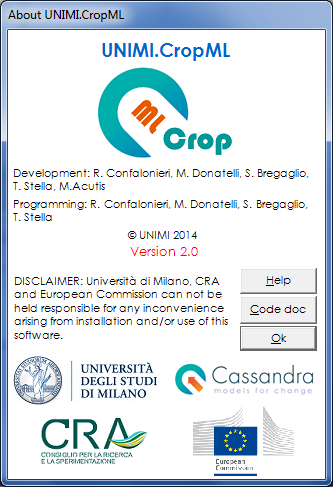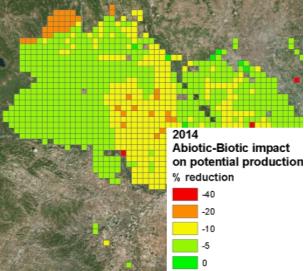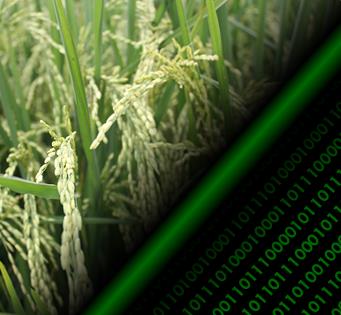Model simplification and development via reuse, sensitivity analysis and composition: a case study in crop modelling.
 |
2014 - Environmental Modelling & Software, 59, 44-58 |
 |
Stella, T., Frasso, N., Negrini, G., Bregaglio, S., Cappelli, G., Acutis, M., Confalonieri, R. |
Abstract:
Crop models, like many representations of environmental processes, tend to be over-parameterised. A redesign of the SUCROS family of crop models, largely driven by sensitivity analysis, is presented here. In particular, two new versions of WOFOST, the most widespread model from this family, were developed. The first (WOFOST-GT) reduces model complexity through the definition of functions driven by few parameters with biological meaning. The other (WOFOST-GT2) improves canopy representation and senescence. Each version was evaluated for rice and winter wheat. Results highlighted a similar accuracy for the three versions: the original one achieved mean normalized RMSE of 13.75% and 10.75% for winter wheat and rice; corresponding values for the new versions were 14.42% and 10.79% (WOFOST-GT), and 14.38% and 10.85% (WOFOST-GT2). The new versions were considerably less complex, (60% less parameters). These improvements, increasing model usability without compromising its sophistication, can be transferred to other models from the same family.
 |
Keywords: WOFOST, AFGEN tables, canopy layers, CropML |
 |
DOI: 10.1016/j.envsoft.2014.05.007 |
 |
CropML CropML is a framework-independent component implementing a variety of approaches for crop growth |
- Comparison of three calibration methods for modeling rice phenology
- A simple pipeline for the assessment of legacy soil datasets: An example and test with soil organic carbon from a highly variable area.
- A high-resolution, integrated system for rice yield forecasting at district level.
- Downscaling rice yield simulation at sub-field scale using remotely sensed LAI data.
- Analysis and modelling of processes involved with salt tolerance and rice.
- Estimating crop nutritional status using smart apps to support nitrogen fertilization. A case study on paddy rice.
- Development of generic crop models for simulation of multi-species plant communities in mown grasslands.
- Quantifying uncertainty due to stochastic weather generators in climate change impact studies
- Predicting rice blast disease: machine learning versus process-based models
- Boundaries and perspectives from a multi-model study on rice grain quality in Northern Italy.







